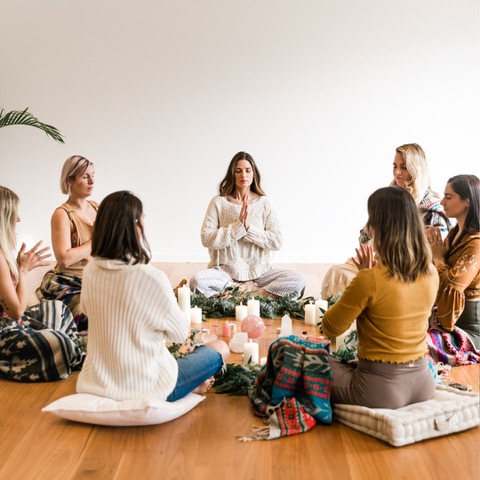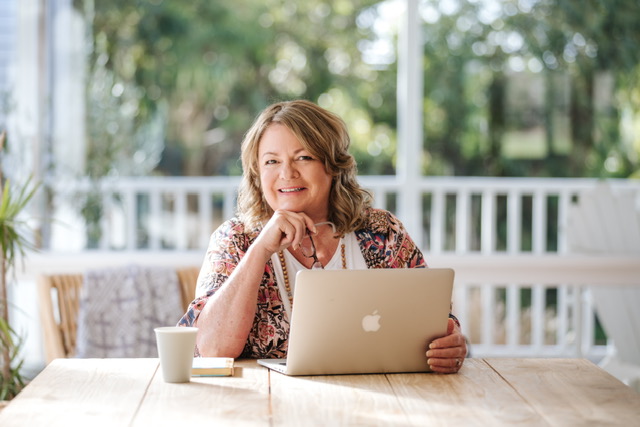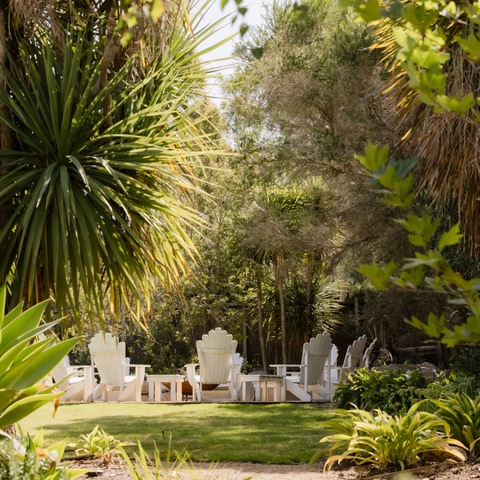
The power of retreat partnerships
11 August 2025
Wellness and business retreat trends for 2026: What to expect
20 October 2025Holding space for others is what retreat facilitators and coaches do on a weekly and often daily basis.
Facilitating a retreat can put you in a vulnerable situation, and you will need the skills to show compassion and empathy while your client or group is moving through a healing process. As retreats often take people on a journey or transition, they are often life-changing and challenging, making them a crucial part of any retreat process.
Important reminders for leading your group and holding space on a retreat
It is our natural tendency as humans to offer up advice and fix things that are broken, especially those who we see going through a crisis or challenging time on retreat or in life in general.
However, there is immense healing power in simply holding space and allowing someone a safe environment to voice their concerns, troubles, or feelings.
As a Retreat Leader, holding space on a retreat involves all of these elements along with creating a safe, nurturing and supportive space for participants to explore their thoughts and feelings.
It is one of the most important and powerful experiences a retreat leader must master, as it is one of the crucial skills in facilitating and holding space for others on a retreat.
When we allow participants to express themselves, they feel heard and experience personal growth, self-discovery, and, of course, healing.
To hold space for your group on retreat requires you to master the skills required to remain calm, non-judgmental, and be present as a facilitator by creating a safe, supportive, and respectful environment where group members can be authentic and express complex emotions without fear of judgment, interruption, or pressure to fix their experiences
By holding space thoughtfully and intentionally, you can create a transformative retreat experience that supports personal growth and healing.
Learning the skills of holding space on a retreat
When starting out as a Space Holder, it’s essential to attend other gatherings, women’s circles, and retreats to understand the essence of what is involved. This will enable you to develop your own interpretations and ideas, bringing together your unique perspective and sacred experience.
When you set out with the right intention to create the perfect environment and setting, the mood, and the boundaries, you then put out the right energy and key components to holding space on a retreat for others.
It’s very important from the outset that you establish clear boundaries, goals and intentions with your group so that they truly understand the purpose and meaning behind the message and actions
How to set the boundaries and meaning when holding space on a retreat
1. Creating a Safe Environment
Ensure that your participants feel physically and emotionally safe. This might involve taking a moment to explain and set clear boundaries, by setting clear intentions will establish trust, and encourage confidentiality among participants.
2. Active Listening
Practising active listening by being fully present and engaged with participants. Explain to all participants that our aim is to focus on truly understanding the other person’s experience without interrupting or formulating your own response. Then, by validating their experiences without judgment and allowing them to express themselves freely with Phrases like “I hear you,” you can be more helpful than offering complex advice.
3. Allow the session to flow
It’s important to set the tone and allow participants to lead their own exploration. So, setting the ground rules by asking your group to resist the urge to offer solutions or advice and allowing participants to use their voice by speaking and finding their own solutions can be extremely healing and empowering for individuals when they discover their own answers.
4. Emotional Support
Preparing the group to be able to support participants emotionally. This could involve providing reassurance, empathy, and understanding as they navigate challenging emotions. Meet all participants where they are, even if you don’t agree with their situation. Allow participants to trust their own wisdom and come to their own conclusions.
5. Journalling and time for Reflection
Allowing plenty of time for participants to fully reflect by encouraging all participants to spend time in reflection and to journal their thoughts. This can be done through guided meditations, journaling prompts, or group discussions.
6. Encouraging Vulnerability
Foster an atmosphere where vulnerability is welcomed. This can help deepen connections among participants and enhance the overall experience. Often, people just need to be heard and understood, not to have their problems fixed.
7. Mindfulness Practices
Incorporate mindfulness techniques to help participants stay present and grounded. This can enhance their ability to engage with their emotions and thoughts.
8. Respecting Individual Journeys
Recognise that each person’s journey is unique. Be attentive to the differing needs and experiences of participants and adapt your approach accordingly.
This practice is particularly valuable in contexts such as retreats, where a facilitator is holding space for the emotional processing that is needed. This process can foster deeper inner connection, healing, and trust between individuals.
Grounding & holding space for yourself after retreat
Holding space on a retreat also means taking care of yourself. Holding space for yourself before and after facilitating a retreat is a crucial aspect of self-care and personal growth.
Here are some strategies to help you navigate this process:
1. Reflection
Allocate time to reflect on your experiences during the retreat. Journaling about your thoughts, feelings, and insights can be therapeutic.
2. Self-Care Rituals
Engage in activities that nourish your body and mind. This might include meditation, yoga, bath rituals, or simply taking a quiet walk in nature.
3. Connect with Your Emotions
Allow yourself to feel any emotions that arise post-retreat. Acknowledge and validate these feelings without judgment.
4. Set Boundaries
After a retreat, it’s important to take time for yourself before jumping back into your normal routine. Journaling and communicating your need for space to those around you.
5. Seek Support
I often find it valuable to reach out to a good friend or colleague, especially if something challenging has come up on retreat and you are finding it hard to process. It’s important to remember your own experiences, growth, learnings and opportunities, and I always love the support and understanding of a fellow facilitator or mentor.
6. Creative Expression
Engage in creative activities like art, music, or dance to express what you’ve experienced and reconnect with your inner self.
7. Grounding Practices
Use grounding techniques, such as deep breathing, yoga or nature walking, to help centre yourself.
8. Celebrate Accomplishments
Acknowledge the work you did during the retreat and affirm your efforts.
Honouring Your Own Healing with Summer House Retreat
Celebrating these moments by sharing them with your clients in your business channels and social media platforms, so that you can boost your mood and allow others to see your work. Remember, holding space for yourself is just as important as holding space on a retreat for others, so allow yourself the time and freedom to heal and reflect.
When you’re ready to hold space for others with confidence and care, Summer House Retreat is here to support you. We offer a peaceful venue, kind guidance, and practical tools to help you lead transformative experiences. Book a connection call with Debbie Fowler today and take the next step in your retreat leader journey.



